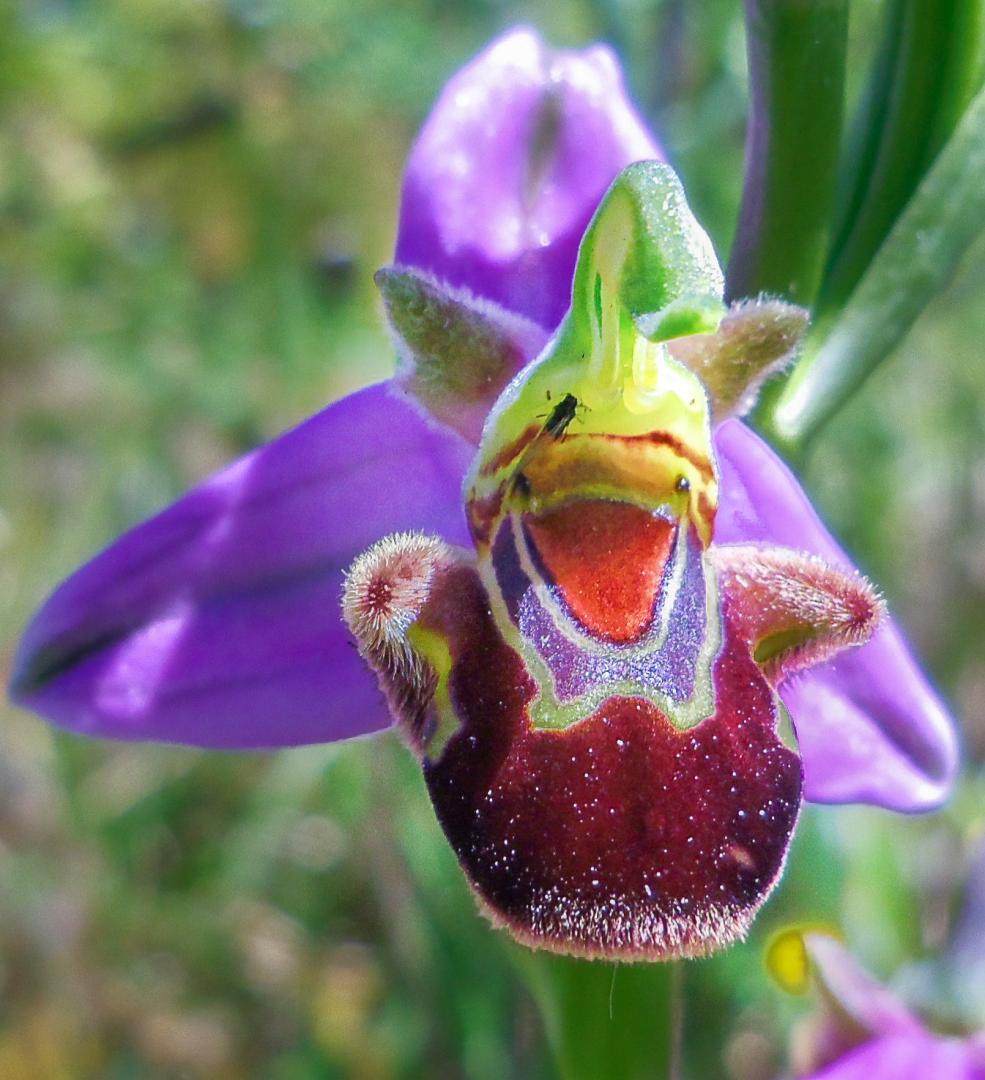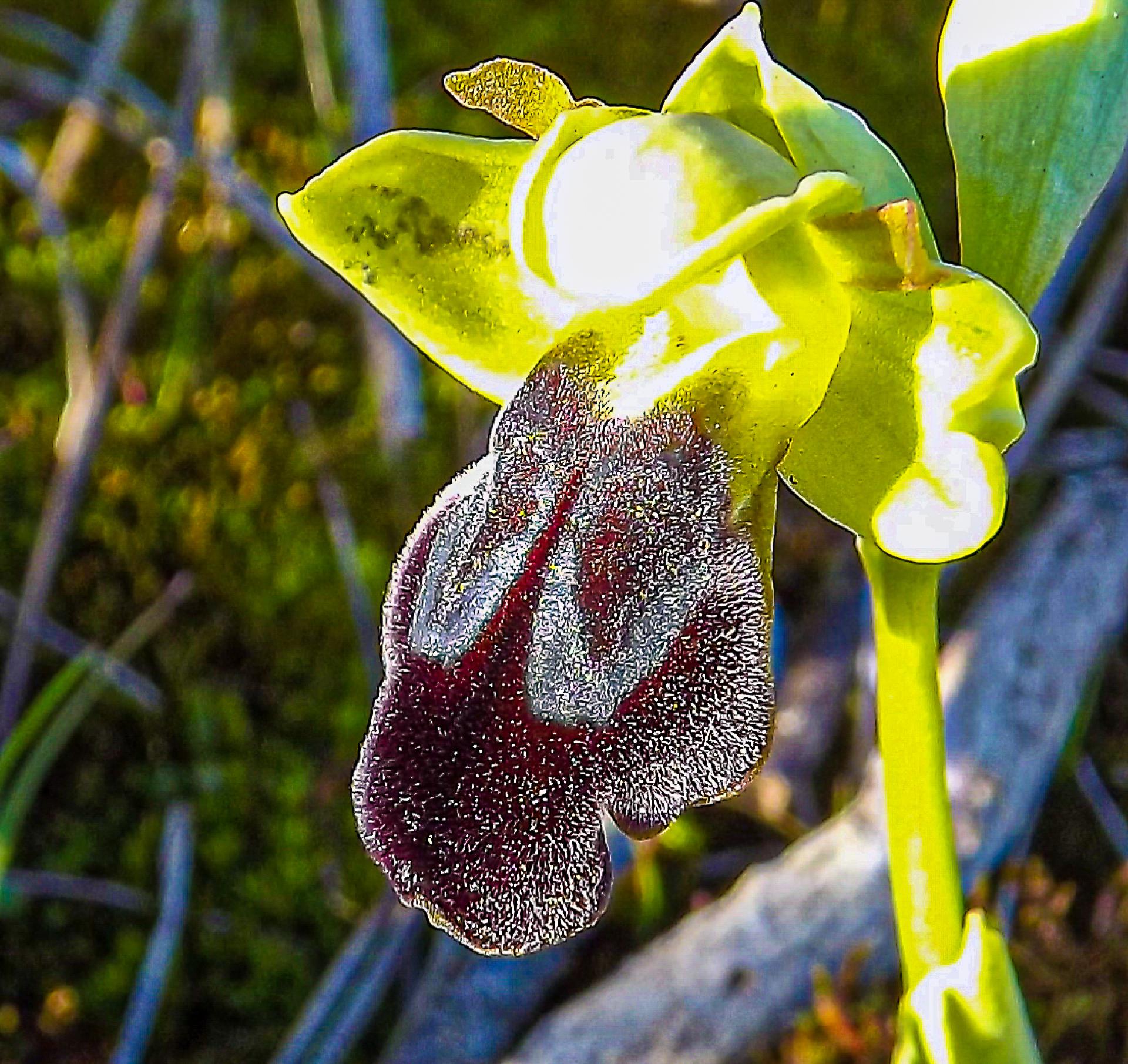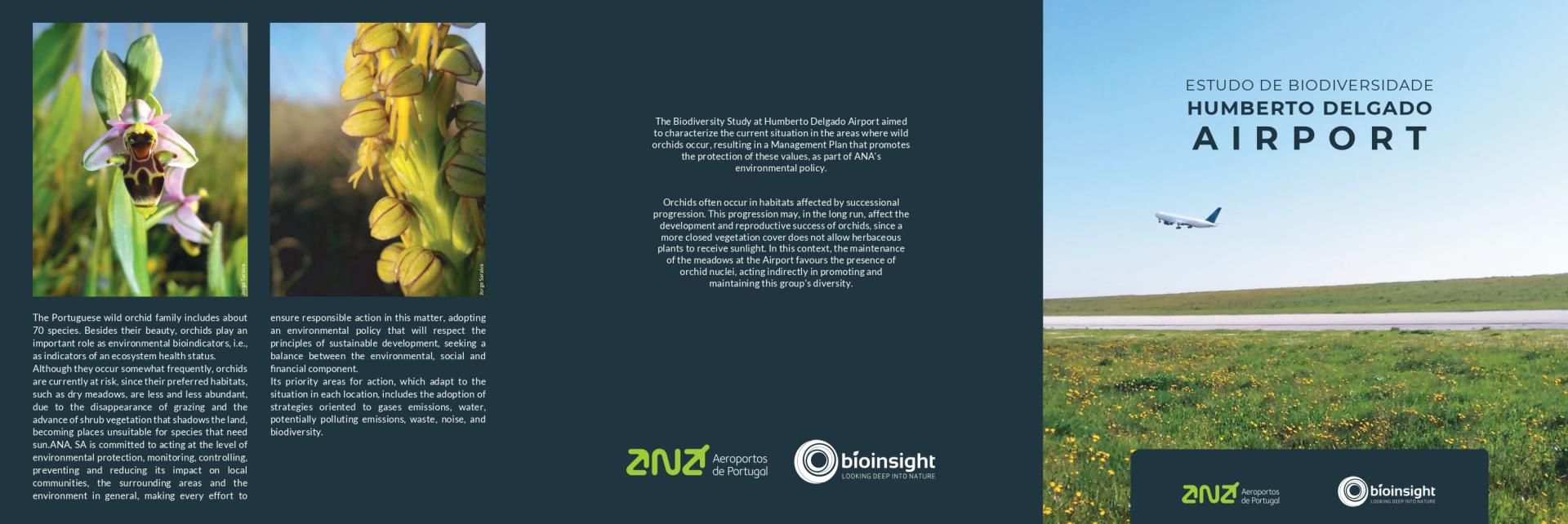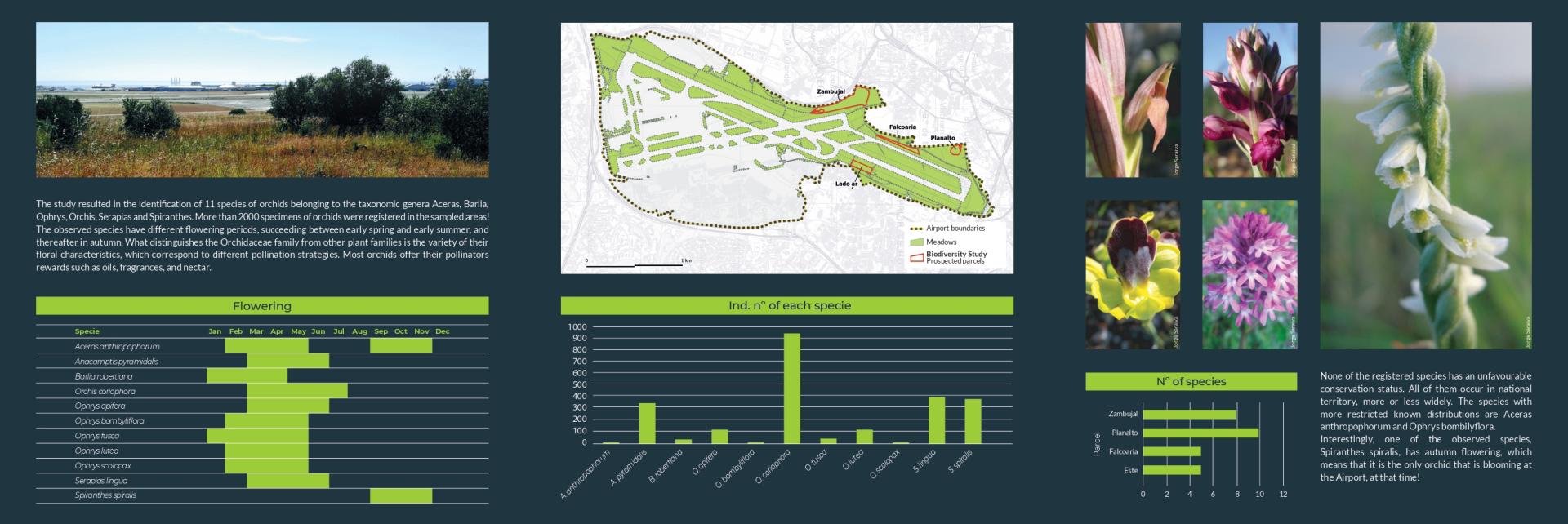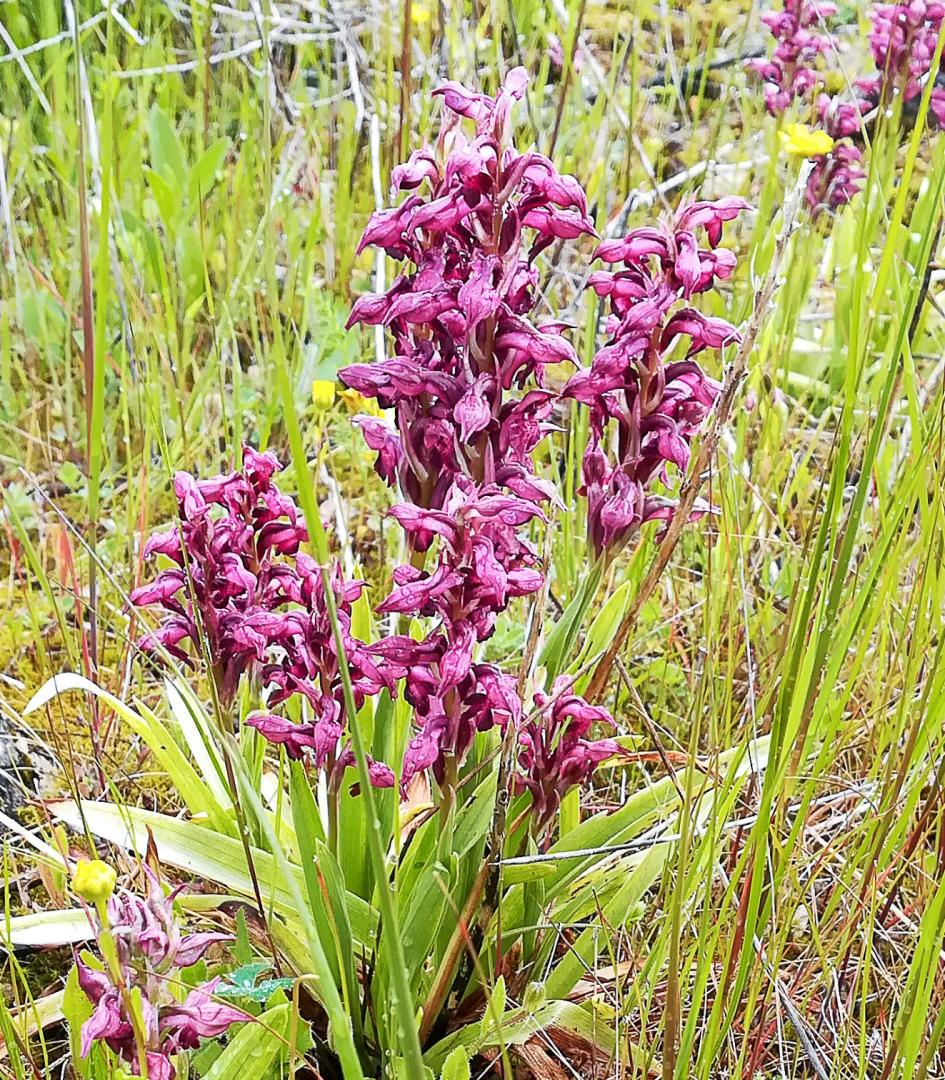Preservation of Wild Orchids
Basic information
Project Title
Full project title
Category
Project Description
With this project, we want to show how the biodiversity can be respected within airports and in parallel, by publicizing such a fantastic heritage like the wild Orchids, motivate all airports and the community to, taking into account the characteristics of their regions, find other species of flora or fauna to
protect, thus replicating this project and contributing to protect BIODIVERSITY.
This wild orchids can also act as bio-indicators of airport's environmental quality.
Project Region
EU Programme or fund
Description of the project
Summary
Lisbon Airport is in an area of limestone outcrops and in a phytoclimatic region where in the past there were large Mediterranean forests of wild olive, pine and oak trees. Today only remain a few small woods and dry grassland meadows where wild orchids can be observed.
In 2012, during a flower survey, we detected the first orchids. At the same time emerged an idea of implementing a Management Plan as a way to preserve them.This idea was realized in 2019/2020, through identification, accounting and respective geo-referencing.The general objective of the Biodiversity Study of the Humberto Delgado Airport is to characterize the current situation of the area where wild orchids occur.
The study aims to result in a Management Plan to be implemented in the area of occurrence of this plant group, where the main focus is assumed to be the protection of the areas richest in orchids with the conditioning of the interventions to which the meadows are subjected, especially in the orchid's flowering phase, as well as the adoption of concrete management measures along with the development of means of disseminating this heritage, which will promote the safeguarding of these values.
The Portuguese wild orchid family is made up of some 70 species. Besides their particular beauty, orchids play an important role as environmental bio-indicators, i.e. they are indicators of the state of health of an ecosystem. Orchids are currently at risk as their preferred habitats, such as dry grasslands, are becoming less abundant due to the disappearance of grazing and and are becoming advancing successional progression. This progression may, in the long term, affect the development and reproductive success of orchid populations, In this context, the maintenance of meadows at the Airport favors the presence of the orchids.
ANA, SA undertakes to act in terms of environmental protection, monitoring, controlling, preventing and reducing its impact on local communities, and the environment.
Key objectives for sustainability
The main objectives defined in our project were the following:
- To carry out a detailed survey of orchids;
- To identify the species that occur at the Humberto Delgado Airport;
- To map the areas of occurrence;
- Characterize the management currently practiced in the area of occurrence;
- Publicizing the natural heritage.
After visiting the site, four plots were selected, where apparently there is the greatest concentration of individuals of this plant family. These plots were characterized as to the type of intervention carried out for their maintenance and other factors, such as the biotope present. These plots were subdivided into 25x25 m squares, so as to allow the areas to be prospected systematically on each visit . In the course of the sampling, all 25x25 m grid squares of each plot were covered. Whenever an orchid specimen was recorded, the species, number of individuals and a photographic record was made.
During the field work carried out, all specimens of wild orchids in the study area were identified, counted and their location recorded. The orchid prospection work was carried out during the season favorable to their occurrence, which generally runs from February to May and then between September and November. Thus, a set of field visits was carried out between May 2019 and May 2020 by a flora and vegetation specialist in orchid identification.
All the data collected was inserted in a GIS in order to obtain the cartography related to the presence of the species in the studied sites. After the field work was carried out, the results provided us with scientifically sustained basis to develop the Management Plan without jeopardizing the airport’s operations and safety, while also allowing the wild orchid to prosper (or to remain) on site. With geo referencing we also have the possibility to define the work program, and it is necessary to intervene in a plot, orchid bulbs can be transplanted to an area away that has similar soil and climate conditions .
Key objectives for aesthetics and quality
According to CITES (the Convention on International Trade in Endangered Species of Wild Fauna and Flora), all species are included in Appendix II (Species not necessarily threatened with extinction, but which may become so if trade is not strictly controlled).
Within the scope of the samplings carried out we encounter 11 species of orchids, in total, belonging to 7 different genera of the family Orchidaceae - Aceras, Anacamptis, Barlia, Ophrys, Orchis, Serapias and Spiranthes. Copies were also recorded that, not being in full flowering, were identified only by genus or even as being belonging to the Orchidaceae family.
The sampling work carried out allowed us to assess the abundance of orchids in each plot, and also, within these, the location of the areas with greater abundance of orchids. In total, 2.527 individuals of orchids were recorded.
These are considerable values of specific richness and abundance, considering that we are in an urban environment, in the middle of Lisbon. Effectively, this plant group is at risk, since their preferred habitats, such as dry grasslands, are increasingly less abundant due to the disappearance of grazing and the advance of successional progression. In this context, the maintenance of the meadows at the Airport favors the presence of orchid clusters, indirectly acting to promote and manage the diversity of this group.
Key objectives for inclusion
We this project we aimed to protect the wild orchids while maintaining the airport operational, and we have succeeded.
We also integrated this in a large Plan, to ensure the protection of this wild orchids are integrated in all flora management of the airport, ensuring biodiversity promotion.
Results in relation to category
With this project we actively contribute to urban regeneration, ensure the knowledge, the protection and the development of specific areas, within an full operational airport, where wild orchids can blow and flourish.
Lisbon airport has also the particularity of being surrounded by the city, so this finding and protection of wild orchids has an even bigger value, towards regenerating urban areas and protection of biodiversity.
How Citizens benefit
The project has been a success in terms of spreading the word about orchids among the aeronautical community and all those who have knowledge of the project. The great majority of the community had no idea that orchids existed and, since the involvement of the airport in their preservation and promotion, we have already had feedback of how the community became interested in their preservation, not only inside the reserved space but also outside.
It has been very stimulating to observe that there are more and more people indicating us the appearance of orchids in places that had not yet been located, including by sending photographs. It has been also positive how the awareness of the gardeners is being done and how we are being asked to make visits to observe them.
We are also now open to more questions about it has we have recently launched this information in our website.
Innovative character
We believe that this is the first time that an airport has been motivated in the preservation of orchids in order to maintain biodiversity in its green areas.
We cannot forget that these are technical areas with many limitations, since the management is done in a way to make the green areas not attractive for the avifauna. But if we programe things and know the locations, we can make adjustments in order to preserve and even increase these species.
It is also innovative because by spreading the word about this heritage among the civil population, we are also able to preserve it outside the airport in degraded and wasteland areas.
Plus we can also highlight that we are using it as bio-indicators, to evaluate our airport's environmental quality.

